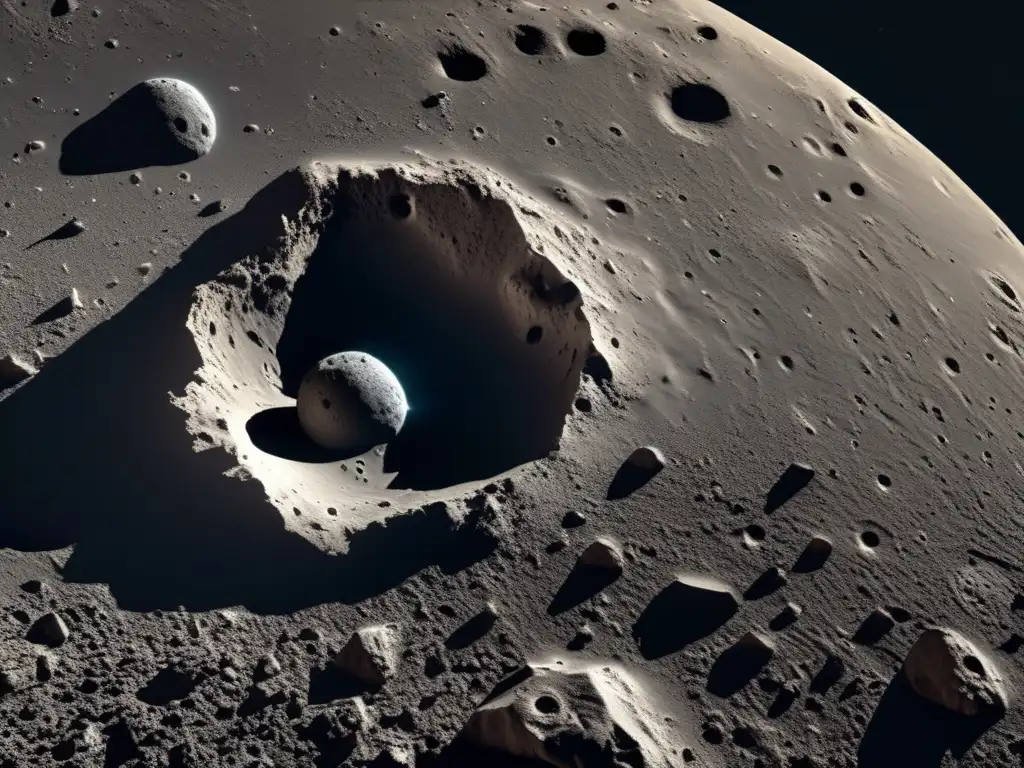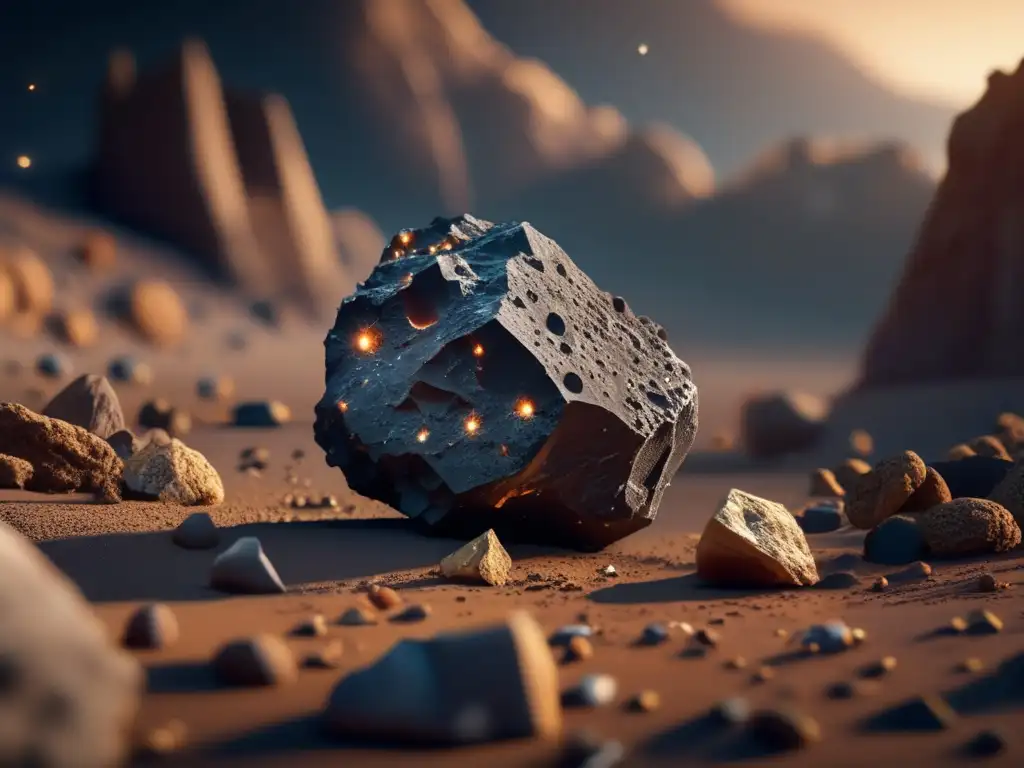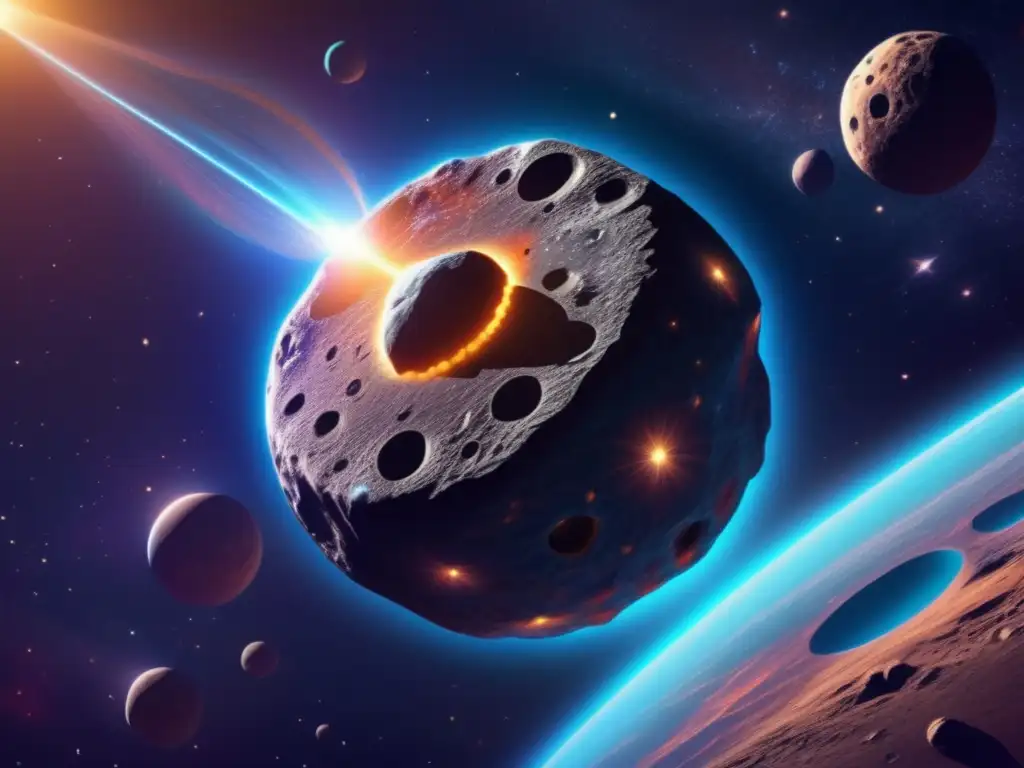The Surprising Features Of Asteroid Lycaon

Introduction
Asteroids are fascinating celestial objects that have captivated scientists and enthusiasts alike for centuries. Each asteroid is unique, with its own distinct features and characteristics. In this article, we will explore the surprising features of asteroid Lycaon, providing valuable insights into its composition, size, and potential significance in our understanding of the solar system.
Composition and Structure

Mineral Composition
Asteroid Lycaon belongs to a class of asteroids known as carbonaceous asteroids. These asteroids are rich in carbon compounds, which make them particularly interesting for scientific study. Analysis of Lycaon's spectral data suggests the presence of organic molecules, including complex hydrocarbons, amino acids, and possibly even water ice. Such findings hint at the potential for extraterrestrial life or the building blocks for life within these asteroids.
Physical Characteristics
Lycaon has an irregular shape, similar to many other asteroids. Its dimensions measure approximately 5 kilometers in diameter, making it a medium-sized asteroid. Interestingly, Lycaon exhibits a rough and rugged surface, likely due to numerous impact craters that have accumulated over millions of years. Some of these impact craters could provide valuable information about the history of the solar system and the impacts that shaped it.
Orbital Characteristics
Lycaon follows a relatively eccentric orbit, which means its path around the Sun is elongated rather than circular. Its orbital period is approximately 4.6 years, and it belongs to the main asteroid belt located between Mars and Jupiter. Furthermore, Lycaon's inclination, or tilt, with respect to the ecliptic plane is moderate, allowing for potential interactions with other asteroids and gravitational perturbations.
Surface Features and Geology

Impact Craters
As mentioned earlier, Lycaon displays a dense distribution of impact craters across its surface. These craters vary in size and shape, offering valuable clues about the frequency of impacts in the asteroid belt. The larger craters can reveal information about impact velocities, projectile sizes, and other parameters that help scientists understand the dynamics of collisions in space.
Ridges and Grooves
In addition to impact craters, Lycaon showcases a network of ridges and grooves. These features are believed to be formed by stresses within the asteroid's interior or as a result of external forces acting upon it. The exact mechanisms behind ridge and groove formation on asteroids like Lycaon are still being studied, but they provide insights into the structural properties and geological processes occurring within these celestial bodies.
Boulders and Regolith
Lycaon's rugged surface is adorned with scattered boulders and a layer of loose rocky material known as regolith. Boulders can range in size from a few centimeters to meters in diameter and often result from impact ejecta or fragmentation of larger structures. Regolith, on the other hand, is a mixture of fragmented rock and dust that covers the asteroid's surface. Detailed analysis of these materials can yield information about the composition and history of Lycaon.
Potential Scientific Significance

Origin and Evolution
Studying asteroids like Lycaon helps scientists unravel the mysteries of the early solar system. Carbonaceous asteroids, in particular, contain pristine materials that have remained relatively unchanged since their formation billions of years ago. By analyzing Lycaon's composition and structure, scientists can gain insights into the processes that led to the formation of our solar system and the building blocks of life.
Resource Exploration
Another area of interest in studying asteroids like Lycaon is the potential for resource extraction. Carbonaceous asteroids are known to contain valuable resources such as water, metals, and organic compounds. These resources could be utilized for future space missions, supporting human exploration and settlement beyond Earth. Understanding the availability and accessibility of resources on asteroids is crucial for advancing space exploration endeavors.
Planetary Defense
Lycaon, like other asteroids, poses a potential impact threat to Earth. By studying its orbital characteristics and size distribution, scientists can better understand the risk associated with such asteroids and develop strategies for planetary defense. Analyzing Lycaon's properties allows us to refine models predicting the behavior of near-Earth objects and potentially mitigate the impact hazard.
Frequently Asked Questions

-
How large is asteroid Lycaon?
Asteroid Lycaon has an estimated diameter of approximately 5 kilometers.
-
What is the composition of Lycaon?
Lycaon belongs to the carbonaceous asteroid class, rich in carbon compounds and possibly containing organic molecules and water ice.
-
Where is asteroid Lycaon located?
Lycaon orbits within the main asteroid belt, situated between Mars and Jupiter.
-
What can the surface features of Lycaon tell us?
The impact craters, ridges, and grooves on Lycaon's surface provide insights into the history, geological processes, and structural properties of the asteroid.
-
Why is studying Lycaon important?
Studying Lycaon helps us understand the origin and evolution of the solar system, explore potential resources in space, and develop strategies for planetary defense against asteroid impacts.
Conclusion
Asteroid Lycaon showcases a range of surprising features that contribute to our understanding of asteroids and their significance. From its organic-rich composition and rugged surface to its influence on resource exploration and planetary defense, Lycaon offers valuable insights into the many mysteries hidden within our solar system. We encourage further exploration and research to unlock the secrets held by this intriguing celestial object.
Thank you for joining us on this journey through the fascinating world of asteroid Lycaon. Feel free to share your thoughts and engage with www.asteroidrealm.com by subscribing, sharing this article on social networks, or participating in discussions. Your contributions help us expand our knowledge and appreciation of the wonders of the universe.
Additional Resources

For those interested in delving deeper into the topic of asteroids and Lycaon, we recommend the following resources:
 The Role Of Asteroid Telemachus In Astronomy
The Role Of Asteroid Telemachus In Astronomy Asteroid Dolon: A Tale Of Discovery
Asteroid Dolon: A Tale Of Discovery Investigating The Unique Features Of Asteroid Rhesus
Investigating The Unique Features Of Asteroid RhesusIf you want to discover more articles similar to The Surprising Features Of Asteroid Lycaon, you can visit the Asteroid Profiles category.
Leave a Reply

Articulos relacionados: